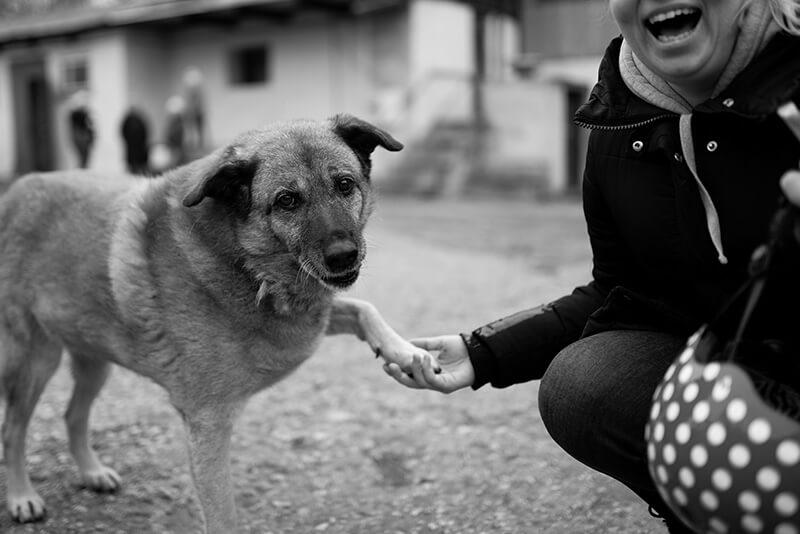
Let’s face it, there are times when you wish you could get off your balcony and scream at the top of your lungs to show how much you love your furry friend. It may be good for you, but not for your doggie. Love, (happiness) and anger (sadness or disappointment) are two basic emotions that we all wish we could easily tell our dogs. However, humans and dogs communicate differently. While verbal communication is paramount for humans, dogs rely on non-verbal communication to convey information.

Fortunately, with over 30,000 years of close contact with humans, dogs have developed communication skills that humans can understand. Tail wagging when excited, eye and ear positions, and facial expressions to show anger or disappointment are some of the ways dogs communicate with humans. So how can you express basic emotions in a way that your loyal companion will understand?
Love
A big hug is a natural way for humans to show affection. For a dog, the same gesture can be uncomfortable or threatening if it comes from an unfamiliar face. The next thing that will come to mind for most dog lovers is to give them a treat. While it’s not a bad idea, you don’t want your doggie to become overweight, especially if you don’t have an exercise program for it.
A more effective way to express your love for your dog is to gently rub the back of his ears. This method is very effective because it stimulates the release of endorphins, a hormone responsible for the feeling of pleasure. This hormone is also used to relieve pain. Otherwise, you know how dogs bend over you when you sit together? It’s their own way of cuddling. You can return the favour if you are very strong.
Dogs like affection and enjoy cuddling because they feel safe. Sharing your bed with your doggie can be interpreted as the ultimate show of love and affection. When this is not possible, offer him a warm winter dog bed. And a dog coat can say more about your love than a million words.
Anger
In case you don’t already know, dogs can read moods. They can sense when you are angry. They rely heavily on their sense of smell for this important task. When humans are angry, there is an adrenaline rush that often leads to an increase in sweat production. Dogs can sense this increase in sweat production.
Humans can also do other things involuntarily when they are angry, such as raising their voice pitch, tightening their muscles or stopping looking into their eyes. Believe it or not, it hurts your faithful dog to see you exhibit any of these things. So how will you know the message is being received? Dogs act differently depending on their breed. Some bark or growl, cower and look for a place to hide, or walk towards you in a sober manner.

Training your dog to communicate
The more you take your dog outside and allow him to interact with people, the better he will be able to read different emotions through observation. You can also teach your dog to communicate through gestures. Creating a routine can help you communicate better with your dog. Dogs learn faster through repetitive activities and games.
The pointing game is perhaps the simplest of the series of games you can play with your dog. Place two identical cups face down on the ground within inches of each other. Make eye contact with your dog and point at one of the cups. Your doggie must obey your gesture and explore the cup. Don’t get too excited if he didn’t get it the first time. As a motivation, you can place crumbs of food under the cup. Gradually, you’ll start to say more with gestures than words.
Communicating with your dog is a great way to increase your dog’s love for you and of course your love for your dog. In these busy times, spend some time each day talking to your dog in his own language – it will reward you and your dog will be calmer and more affectionate.
